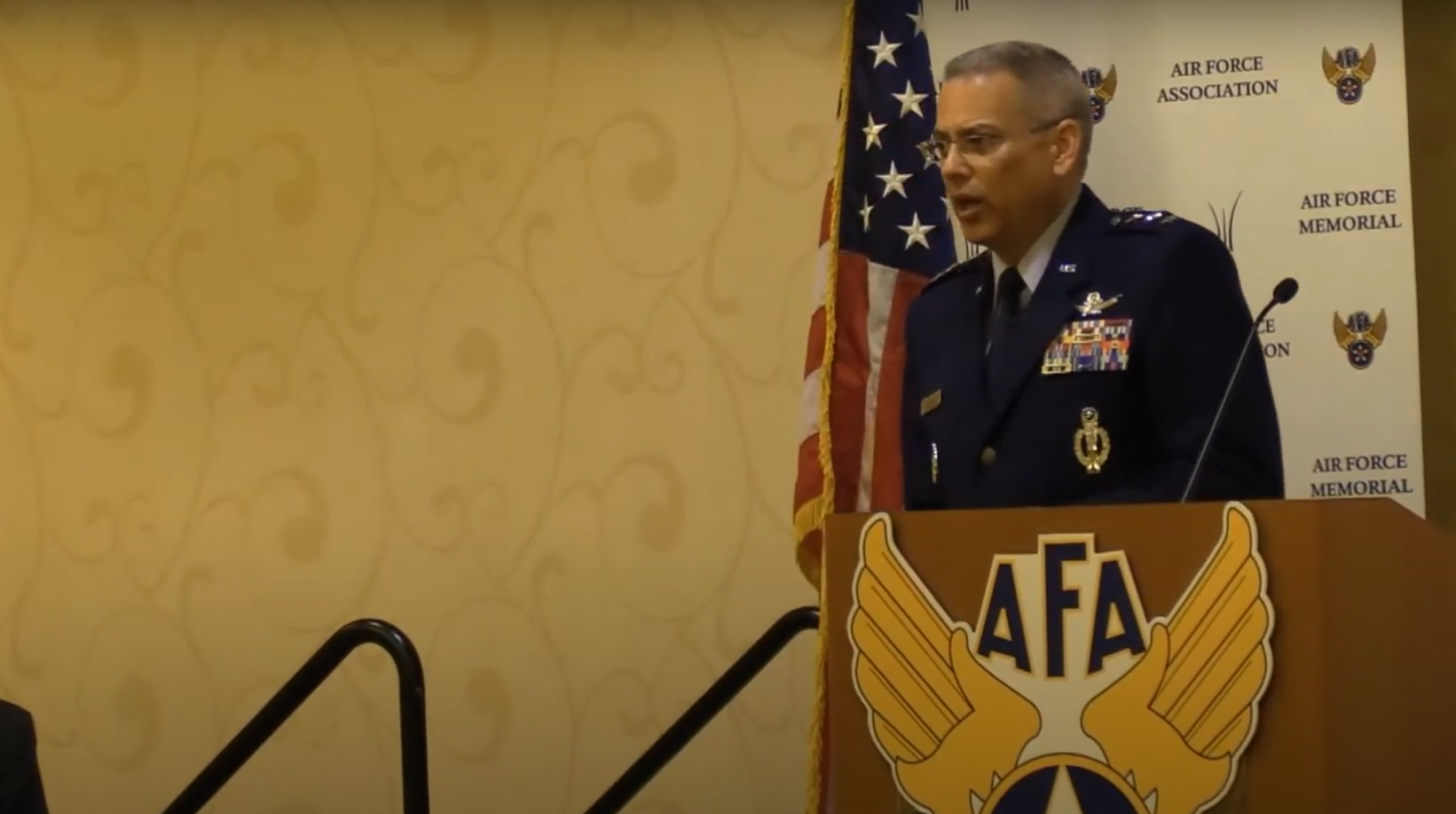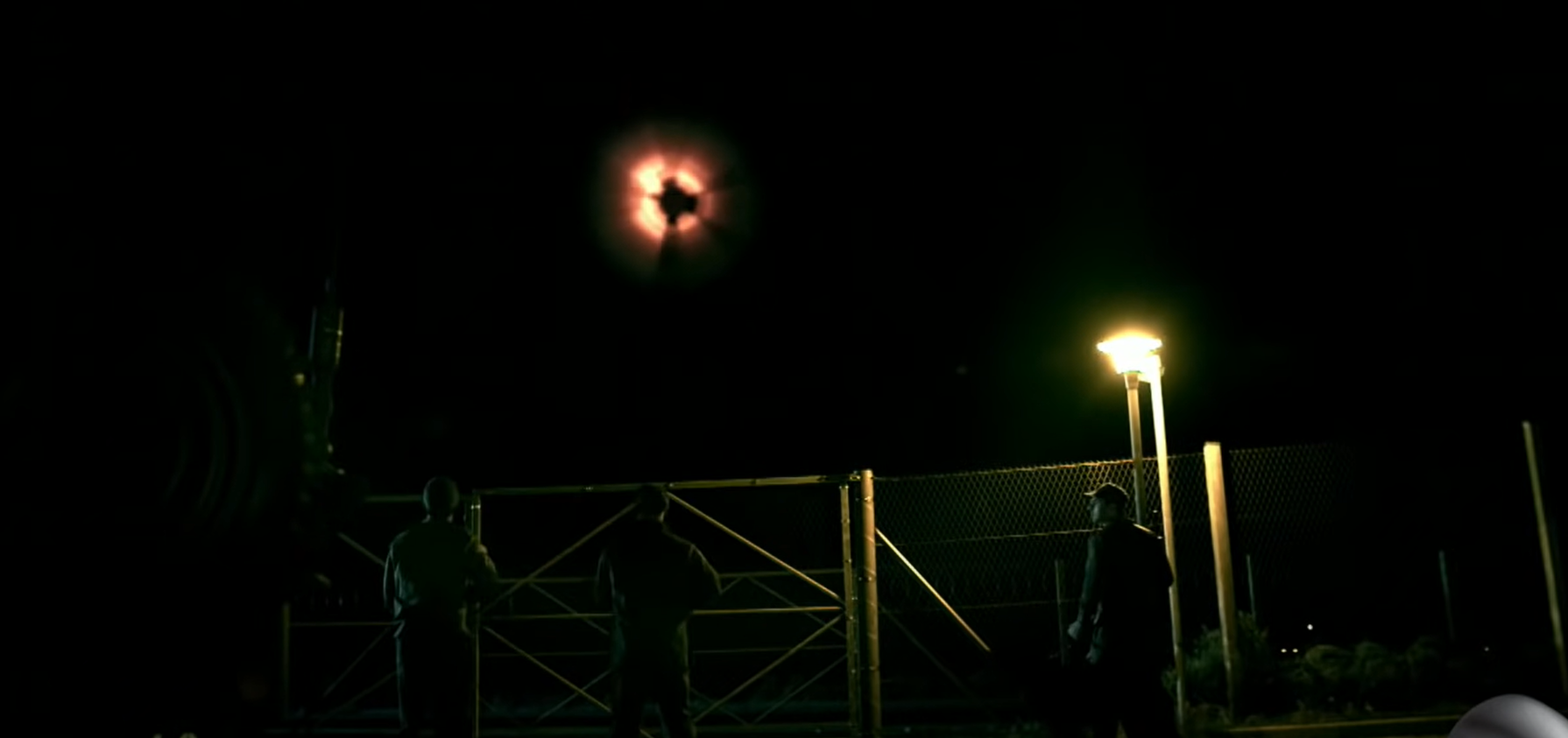Expect The Unexpected In 2022, As UFOs Go Global
Written by Christopher Sharp - 17 December 2021
It’s over.
Once President Biden signs the NDAA 2022, it will trigger a generational tectonic shift within the rotten hallways of the Pentagon.
The old guard is rapidly losing grip.
Although obstacles do remain, the (currently proposed) Unidentified Aerial Phenomena (UAP) Office will soon have the unprecedented mandate to uncover information and coordinate with other agencies and other nations across the world.
The Department Of Defense’s (DoD) newly established UAP Group wasn’t enough to placate elected members invested in the UAP topic. The Congress was never going to buy its AOIMSG - it’s gone too far now - key members no longer trust the Pentagon’s old guard.
We must however caveat this by adding that it was never a foregone conclusion that the strong Gillibrand-Rubio (G-R) language would mostly survive the complex NDAA process and resistance from DoD factions.
But here we are, in unchartered territory.
A topic tainted in stigma now has the attention of Congress’ brightest minds.
The fact that the G-R language has mostly remained intact, suggests those members who occupy key committees want answers from the DoD. They’re perhaps even indignant with how they and their predecessors have been treated for years.
Think for one moment: the politicians YOU elect to oversee and make key defense decisions (perhaps even the Commander in Chief himself), do not have a full picture of potentially crippling vulnerabilities.
These elected members may have no idea about severe security incidents. It could be speculated that they have been denied information, that by law, should have been provided.
Let’s imagine what the defence repercussions may look like.
Think UAPs harassing naval warships, which are being forced to evacuate crews below deck
Think craft traveling into and out of our atmosphere with impunity to and from space as well as being detected in orbit over the U.S.
Think physiological damage from UAPs, leaving brave military personnel seriously ill
Think training ranges and restricted airspace regularly being penetrated with apparent impunity by craft that seem to exceed known physics
Think of UAPs traveling at incredible underwater speeds, disturbing and tracking nuclear submarines
Think UAPs tampering with nuclear weapons
Now, imagine if key elected officials had no idea such events took place. In politicians’ minds, such events were perhaps unthinkable up until a few years ago, before key congressional committees were briefed.
If the language within the NDAA 2022 does indeed reflect stories and information received by committee members, then there is a monumental problem.
The scenarios listed above are all suggested within the NDAA 2022 (when looking at what UAP reports must include) when matched by accounts from former Director of AATIP, Lue Elizondo.
Former AATIP Director, Lue Elizondo
It appears that Congress has urgent questions, and if it doesn’t get answers, there will be a price to pay, especially now that the Inspector General (IG) and appropriations committees are involved.
Elected members have the bit between their teeth, and they aren’t about to let go.
No wonder current and former United States Air Force (USAF) officials, like Frank Kendall and Jack Weinstein, suggest UAPs aren’t a real threat. Anything else would be tantamount to admitting a glaring defense hole and transparency scandal that the USAF has failed to address for years.
Within the USAF, there has been an apparent culture of ignoring the tough reality that has led to information not being fed to elected officials.
But this all comes as no surprise; it’s the very reason Lue Elizondo resigned from AATIP. He just couldn’t report disturbing incidents up the chain to the then Secretary of Defense Jim Mattis.
Jack Weinstein, former Lieutenant General in the United States Air Force
But now is not the time to settle old scores, at least until October 31.
Once the new UAP Office is established, there are pressing issues to address.
2022 is set to be a big year for UAP and Liberation Times has outlined what we might expect to see in the coming weeks and months.
It must however be stated that the situation remains complex and has many moving parts, meaning nothing is certain - it is by no means clear how key officials would react to such an astonishing enactment.
In other words, we are in completely new territory now, with no precedent.
A New Name Is Needed
Sadly, in the agreed NDAA 2022 language, ASTRO is no more.
The previous acronym would have spelled out the Office’s intent and made it easily accessible to the media and public.
Instead, the nomenclature has now been left to Secretary of Defence (Sec Def) Lloyd Austin and his subordinates.
In the coming weeks, a new name should become apparent and indicate whether Austin is prepared to make the UAP Office accessible to both the media and the public.
Anything resembling AOIMSG will set a negative tone from the outset.
Also of importance is whether the name will reflect the nature of UAP as a transmedium phenomenon. The very name UAP, with the inclusion of ‘aerial’, perhaps doesn’t reflect the true extent of what the issue represents.
Where Will The New Office Sit?
Secretary of Defense, Lloyd Austin - source Wikipedia
The NDAA 2022 states that Sec Def and Director of National Intelligence (DNI), Avril Haines, will have 180 days to establish the Office within:
"The Office of the Secretary of Defense, or within a joint organization of the Department of Defense and the Office of the Director of National Intelligence”
From the outside, it may make sense to establish an Office jointly within both the DoD and the Office of the DNI. After all, defense and intelligence officials must work closely to ensure the UAP Office is a success.
A close working relationship across the two departments is necessary, especially as staff within line organizations (conducting field investigations and analysis) will most likely sit within the DoD and Intelligence Community.
Also, questions will arise regarding which branch of the military may take the lead. Rumors have circulated that Space Force may become involved. Establishing a new Office in Colorado Springs could make sense, due to Space Force and USAF facilities within the area, including NORAD and Peterson Space Force Base. Although politicians may prefer a Washington D.C. HQ, to ensure a close eye is kept on progress.
180 days will be provided to establish the Office, but it may be astute to ensure this is done much sooner. Once the NDAA is enacted, the first semi-annual briefing to Congress is expected within 90 days. Then in 318 days, the first annual report must be provided to Congress and the public.
Speed is of the essence to ensure Congress is kept happy, so Sec Def and DNI must prioritize the Office’s establishment.
That means key decisions, encompassing organization structure and recruitment, must be made quickly.
Recruitment Of Staff
Securing staff with the correct clearances and level of expertise will be crucial. Another high priority is to choose someone to head the new Office.
Former Deputy Assistant Secretary of Defense for Intelligence, Christopher Mellon, has previously suggested someone of high stature should head such an Office. Such a person could break down walls and command respect.
Mellon suggested it should be led by an official of 3-star level. However, it may be more useful to recruit someone of 2-star level, who is determined to make the new office a success, rather than a more senior official like Jack Weinstein, who may undermine efforts.
A line organization would need to be established to conduct field investigations of UAP incidents. More line organizations will also be required to conduct scientific, technical, and operational analyses of data gathered by field investigations.
The recruitment process may involve enlisting experts from outside the government, and the NDAA 2022 paves a way (through Sec Def and DNI directives) to provide required security clearances. Perhaps recruits could include familiar names attached to the Galileo Project and Scientific Coalition for UAP Studies.
Recruitment may seem a daunting process, however, the previously established UAP Task Force, if possible, should provide a base to build upon. Perhaps those previously associated with the UAPTF could also be enlisted, given their knowledge and expertise.
Coordination With Other Agencies
UAPs have reportedly deactivated nuclear weapons systems
Government agencies are known to compete rather than cooperate.
To coordinate successfully, an understanding and protocols must be established between the new Office and other agencies, including the CIA, NASA, and Department of Energy.
It may be plausible that some agencies could set up their own separate UAP offices, to better facilitate communication and dissemination of data of reported incidents.
This would be key to ensure effective coordination, whilst protecting those agencies from scrutiny, especially when elected members are already rattled by the lack of communication and transparency on this topic.
Remember, if certain information is not shared by agencies, then that must be communicated to chairs and vice-chairs of key committees.
Coordination With Allies And Partners
A global conversation is what Lue Elizondo alluded to in his fabled description of third gear.
As we previously reported, key traditional allies will likely be engaged, such as the UK, Canada, and Australia, to share intelligence about UAP and coordinate efforts, which could lead to the establishment of other UAP offices and investigations across other governments.
It should be noted, that at first, such conversations may be preliminary and take place behind the scenes before we see anything meaningful in public.
Coordination with allies may pose problems too - especially if the U.S. (which has airbases in many allied countries) has been hiding incidents involving UAP from them.
This whole coordination process provides a passage to engage and encourage San Marino to make a proposed United Nations request, which could see the establishment of periodic conferences under the UN’s aegis, dedicated to the study of UAP.
If necessary, an ad-hoc partnership could also be created with adversary nations, such as Russia and China, which has recently set up its own UAP investigation.
So long as the correct staff is in place, international coordination (at some level) could occur within weeks, perhaps with support from the State Department.
If this does occur, it could reflect a statement of intent that the U.S. and its new UAP Office mean business.
Factions Of USAF And Other Entities Opposed To Transparency WILL Board The Train
As we previously reported, the game is now up, as those opposed to UAP transparency are surrounded from all sides.
The best immediate course of action that opposition factions can take is to disband the AOIMSG, which would be eclipsed and rendered meaningless when the new UAP Office is established, not to mention a waste of taxpayer money and resources.
Of course, the DoD may try to save face by somehow incorporating AOIMSG into the new Office or vice versa, before gradually disbanding the newly created Group.
The Sec Def has the authority to instruct the USAF and other entities to cooperate. This would be in everyone’s best interest, especially with the IG monitoring the situation.
If information is not shared within the DoD, there will be questions asked of Austin by Congress - something Biden does not need before midterm elections.
That could mean a climb-down from the USAF and never-seen-before levels of cooperation.
With some opponents potentially nullified, new footage of UAP could emerge publicly. Such footage would lend credibility to the new Office and encourage other nations wishing to avoid ridicule whilst establishing their UAP investigations or offices.
But This May Not Be Enough
Despite the positive outlook provided, this may not be enough.
It is apparent that important information may have not been provided to elected representatives.
If annual and semi-annual reports highlight shocking information and events, politicians may proceed with public hearings to hold the DoD or other agencies accountable.
With annual unclassified versions on the horizon, it would become especially important to restore trust and persuade U.S. citizens that action is being taken. Trust in government is low, so eventually, this may be necessary.
The annual report is due on October 31, before the midterm elections take place. President Biden’s administration has cited the importance of transparency in government, and if no such action is taken to address potential critical issues, the UAP topic could easily become politicized.
In this scenario, such hearings are more likely to take place in 2023, after the issuance of the report, allowing elected members time to digest its content and prepare accordingly. Any premature actions could jeopardize efforts. Also, it’s worthy to note, that despite UAP being a current bipartisan issue, Biden could become a lame-duck President following the elections, which could potentially determine whether hearings are more likely.
At this same time, we could see steps taken to provide incentives for whistle-blowers to come forward and share data and stories with Congressional staff. That would help expedite data sharing and bring onboard private contractors, who may possess further information and materials regarding UAP.
But there is one more prediction, which may sit above all other scenarios included.
And that relates to the first unclassified public report, due on October 31 - could we about the see the first reference to ‘non-human intelligence’ or something to that effect?
If so, the midterms may include some interesting debates.
Liberation Times Opinion
Love our content and wish to support the website? You can now become a Patron: Liberation Times is creating UAP Content | Patreon





